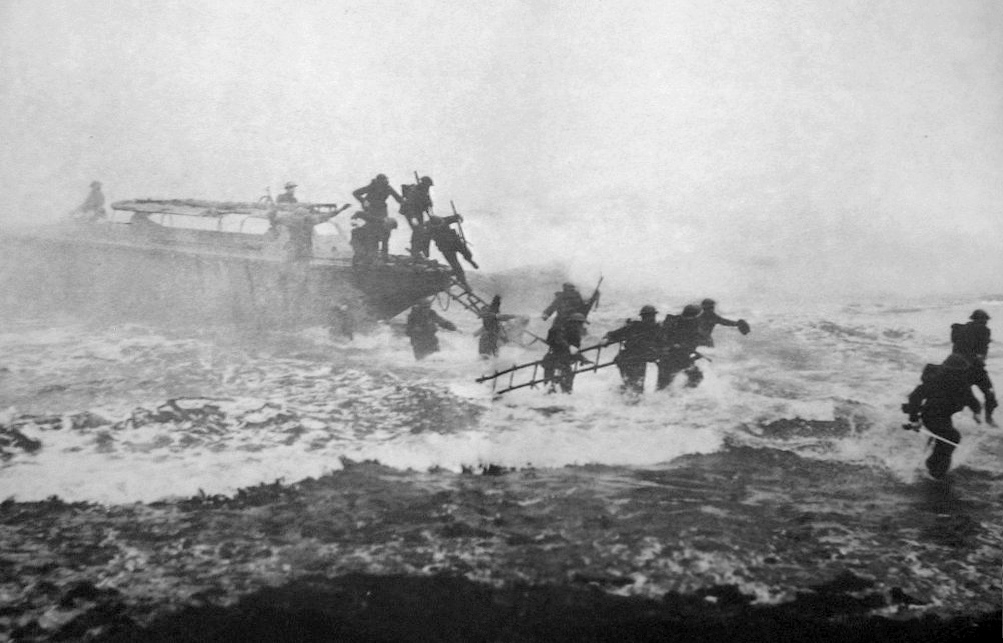Lieutenant Colonel John “Mad Jack” Churchill had a motto: “Any officer who goes into action without his sword is improperly dressed.” World War II was filled with stories of bravery and heroism, but few individuals embodied the spirit of adventure and audacity quite like Lieutenant Colonel John Malcolm Thorpe Fleming Churchill, better known as “Fighting Jack Churchill.” With his bagpipes, longbow, and sword in hand, Churchill became an iconic figure of the war, defying convention and leaving a lasting legacy. In this post, we delve into the remarkable life and exploits of Fighting Jack Churchill during World War II.
He was born on September 16, 1906, in Surrey, England, Jack Churchill displayed a zest for adventure from an early age. According to Historic UK, Churchill then entered the Royal Military College in Sandhurst, and graduated in 1926, moving to Burma with the Manchester Regiment. His time in Burma was largely characterized by two things: his long motorcycle rides across the country, and his learning to play the bagpipe. He served in various campaigns, including the Waziristan and Burma rebellions, where he demonstrated his prowess as an exceptional soldier and marksman.

He also put his archery and bagpipe skills to work during, appearing in two films, The Thief of Bagdad (1924) and A Yank At Oxford. (1938) Churchill’s fascination with archery led him to develop a unique skill set that would set him apart during World War II. He became proficient in the use of the longbow, and took second place at the World Archery Championships in Oslo, Norway as the representative of Britain. Unconventional as it may have seemed, Churchill believed the longbow had psychological impact and symbolic value.
Asked by a general who awarded him a decoration why he carried a sword in action, Churchill is said to have answered: “In my opinion, sir, any officer who goes into action without his sword is improperly dressed.”
During the Battle of France in 1940, Churchill showcased his audacity and fearlessness. Armed with his longbow, he led a charge against German troops, capturing 42 enemy soldiers and a mortar crew. During one of his force’s raids, he ambushed and shot a German patrolman, — which earned him the title of the only British soldier to have felled an enemy with a longbow during the war. Churchill’s daring act earned him the Military Cross for bravery and became one of the defining moments of his military career.
Churchill’s adventurous spirit led him to volunteer for the newly formed Commandos, an elite unit specializing in unconventional warfare. In preparation for D-Day, he trained his men with sword and bow, a testament to his unyielding belief in the power of unconventional tactics. On June 6, 1944, Churchill landed on the beaches of Normandy, playing his bagpipes to rally the troops amid the chaos of battle.
If it wasn’t for those damn Yanks, we could have kept the war going another 10 years
During a raid in 1944, Churchill and his unit were overwhelmed and captured by German forces. Despite being taken as a prisoner of war, Churchill’s spirit remained unbroken. He made several daring escape attempts and even played a part in the infamous “Great Escape” from the prisoner-of-war camp Stalag Luft III. Unfortunately, he was recaptured and remained a POW until the war’s end. According to fellow soldiers, Churchill was disappointed in the sudden end to the war, and exclaimed: “If it wasn’t for those damn Yanks, we could have kept the war going another 10 years!” After the war, Thomas Churchill wrote a book called Commando Crusade detailing many of his brother’s military exploits.
Churchill resumed his military career and served in various capacities, including as an instructor at the Land Air Warfare School. In 1952, he had a minor part in the 1952 MGM-produced film Ivanhoe. He eventually retired from the army in 1959 but continued to embrace adventure and passion for life. He lived in Australia and worked as a newspaper editor, surfed, and became an accomplished painter.



